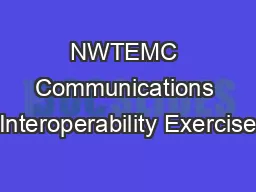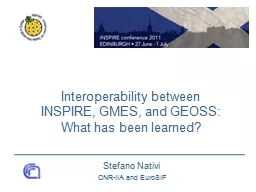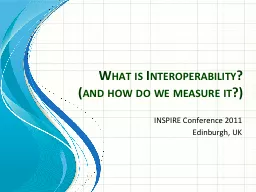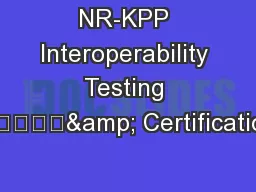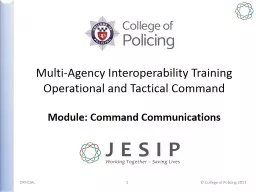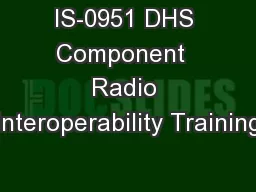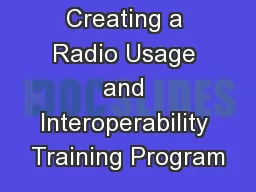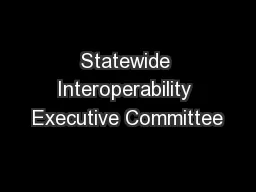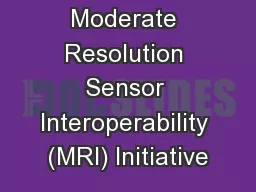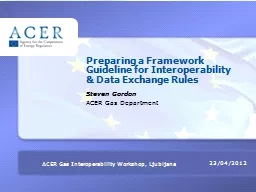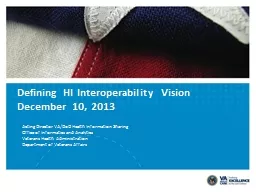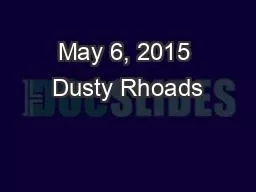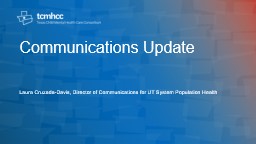PPT-NWTEMC Communications Interoperability Exercise
Author : pasty-toler | Published Date : 2018-01-07
CDR Steve McLaughlin USN ret TJ Harmon CEM ICEBREAKER By the time this exercise is over we might need an icebreaker Exercise Objectives Define communications interoperability
Presentation Embed Code
Download Presentation
Download Presentation The PPT/PDF document "NWTEMC Communications Interoperability E..." is the property of its rightful owner. Permission is granted to download and print the materials on this website for personal, non-commercial use only, and to display it on your personal computer provided you do not modify the materials and that you retain all copyright notices contained in the materials. By downloading content from our website, you accept the terms of this agreement.
NWTEMC Communications Interoperability Exercise: Transcript
Download Rules Of Document
"NWTEMC Communications Interoperability Exercise"The content belongs to its owner. You may download and print it for personal use, without modification, and keep all copyright notices. By downloading, you agree to these terms.
Related Documents

